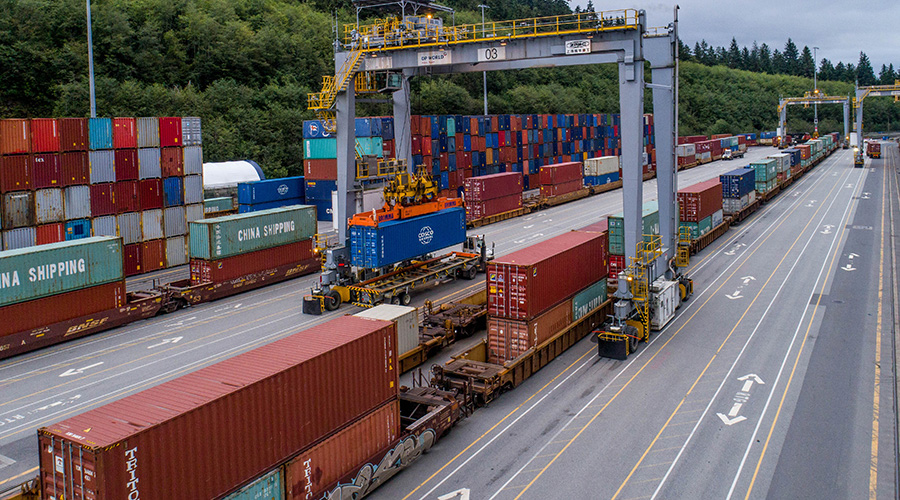CN creates priority train to help speed freight from Shanghai to Chicago
9/17/2021
By Jeff Stagl, Managing Editor
At just about any major U.S. or Canadian port, there are both good and bad developments these days.
The good: A record-breaking number of containers continue to pour in as consumer spending soars, especially from online shopping.
The bad: As containers pile up, severe port congestion is causing long delays in moving goods from origins to destinations.
That’s what CN and ocean carrier COSCO Shipping Lines Co. Ltd. are facing at the Port of Prince Rupert in British Columbia.
The stopping and staging point for containerized goods imported from Shanghai, China, is hampering their efforts to transport the cargo to Chicago — a huge consumer market — in a timely fashion. The port’s Fairview Terminal is the second-largest container facility in Canada, handling up to 1.3 million containers annually.
If anything, CN, COSCO, the port and other supply-chain stakeholders are seeking Shanghai-to-Chicago container moves that are faster and timelier. Enter an expedited freight program CN recently created to help improve the overall transit time.
 COSCO Shipping Lines Co. Ltd. vessels transport containers from Shanghai, China, to the Port of Prince Rupert, where they quickly are loaded onto a CN priority train. CN
COSCO Shipping Lines Co. Ltd. vessels transport containers from Shanghai, China, to the Port of Prince Rupert, where they quickly are loaded onto a CN priority train. CNThe goal is to move containers on a COSCO ship from Shanghai to the port, quickly load them on a CN priority train — eliminating any dwell time — and transport them to Chicago without any stops.
“It’s a straight shot to Chicago,” says Girish Nair, CN’s assistant vice president of international intermodal. “We have the cars and cranes ready to go at the port. The idea is to have no impediments.”
By expediting ocean transport, saving up to 72 hours of port dwell time and trimming the train travel time from 5.5 or 6 days to 4 or 4.5 days, the entire container move from Shanghai to Chicago is projected to take about 16.5 days instead of a typical 21 days or more.
CN’s first-ever priority train from Prince Rupert pulled away from the seaport on Sept. 14. It is moving ahead of schedule and the railroad hopes to beat the estimated time of arrival, says Nair. The train is expected to reach Chicago on Sept. 18.
The move serves as an expedited supply chain model CN hopes to replicate in other places working with various stakeholders. However, cargo fluidity and supply-chain infrastructure are important factors to consider when determining if the model could work in another area or at another port, says Nair.
CN has been working with many partners to find ways to ease supply-chain bottlenecks caused by port congestion, he says. Clogged freight pipelines tend to create a sense of helplessness for all constituents.
“All you can do is just wait and watch,” says Nair.


